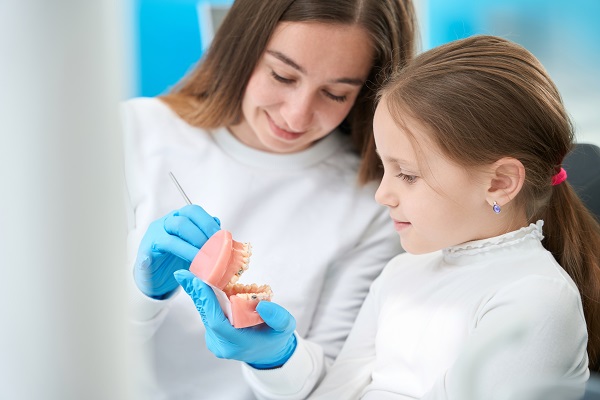Kid-Friendly Dentist: Anxiety-Managing Techniques for Dental Fears

Kid friendly dentists are experienced in handling children with dental fears. Fear of the dentist and dental procedures is common and could cause patients to avoid dental care and lead to poor dental health. Symptoms exhibited by kids with dental phobia include sweating, dizziness, cardiac sensations, trembling, and tingling.
Managing Dental Anxiety
The kid-friendly dentist use anxiety-managing techniques to ease the patient’s discomfort. Some of those techniques are described below:
Pharmacological management
Managing pain and anxiety through pharmacology entails using sedation and general anesthesia, and is often only used when the patient cannot respond and cooperate properly with psychotherapeutic techniques, has dental phobia, or is unwilling to undergo the dental procedure. Children with special needs (mental retardation, mental illness, autism, traumatic brain injury) and medical issues will also need pharmacological methods.
Sedation involves using a drug or multiple drugs to suppress the central nervous system (CNS), to limit the patient’s cognizance of their surroundings. Depending on the level of dosage, the sedation may be general, conscious, or deep. Sedation does not stop any pain from occuring. Kids that have a minor systemic disease that does not cause any functional limitation, can be considered eligible for sedation.
Cognitive therapy
A patient’s thoughts and emotions are aligned, and their actions are based on their thoughts. Thought and expectations prompt different feelings and physiological reactions. Anxious patients usually have wrong notions and expectations about dental procedures. Helping them curb such negative thoughts is a method of reducing dental anxiety. Cognitive treatment techniques focus on changing and restructuring the basis of negative beliefs and help them control the negative thoughts. The kid-friendly dentist will attempt to distract the child from their fears using different cognitive methods such as distraction, encouragement, guided imagery, altering expectations, focusing attention, and thought stopping.
Positive reinforcements
This is an effective method used by a kid-friendly dentist to reward good behavior and encourage the recurrence of such behavior. The methods used could be a facial expression, positive voice modulation, verbal praise, and suitable physical display of affection by members of the dental team.
Distraction
Distraction means diverting the patient’s attention from what they may believe is an uncomfortable treatment. This causes a reduced perception of discomfort and stops negative or avoidance attitudes. Giving patients a brief break after a stressful dental procedure can be an effective way of distracting them before considering a more advanced behavior adjustment method. The dentist can use technologies for visual and auditory distraction, including a TV set, background music, computer games, and 2D or 3D glasses for movies.
Increasing control
Many patients often fear losing control when undergoing a treatment procedure. The dentist can reassure the patient by describing the treatment procedure and the techniques used to ensure their safety. The patient can get more control by learning about the process and with behavioral control.
Final note
A kid-friendly dentist can use different techniques to alleviate their patient’s fears and make them more comfortable when they sit in the dental chair. If your child is dealing with a form of dental anxiety, do not hesitate to talk to the dentist about anxiety-managing techniques.
Request an appointment here: https://sonoma.saidental.net or call Sai Dental Care at (707) 509-1147 for an appointment in our Sonoma office.
Check out what others are saying about our dental services on Yelp: Kid Friendly Dentist in Sonoma, CA.
Related Posts
Helping your child develop good oral hygiene habits starts at home. But which products should you use to keep their teeth bright and healthy? Our kid-friendly dentist can recommend the best products to support your child's oral healthcare between their routine checkups and cleanings.A soft-bristled toothbrush designed for children is one of the most important…
A kid-friendly dentist treats oral health concerns in children. However, an equally important part of their job is to work with parents to improve their child’s oral hygiene at home. This is because the majority of oral care takes place away from the office, so parents knowing how to help their child maintain a beautiful…
A dental emergency can happen at any time, particularly to the soft tissue in your mouth. This guide will go over what kinds of emergencies can occur and what steps you should take afterward. This will help you to take care of yourself, whether you are currently experiencing an injury in your mouth or you’re…
An emergency dentist can treat toothaches in a variety of ways if the pain becomes intolerable or the symptoms present a risk of worsening and causing other oral health issues if not treated promptly. However, for minor toothaches that can wait until a more convenient time to be scheduled, emergency dentists may provide useful tips…
